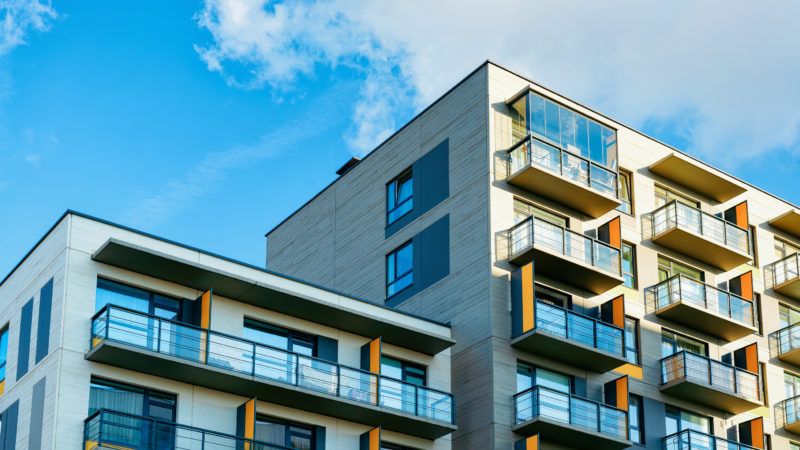For the Third Year in a Row, California Legislators Have Killed a Promising Housing Reform Bill
SB 50 would have legalized mid-rise apartments near transit stops and employment centers. State lawmakers felt it went too far and/or not far enough.

A major housing reform bill failed in California yesterday. Again.
The bill, SB 50, would have allowed denser housing construction near transit stops and job centers and would have legalized four-unit homes on almost all residential parcels statewide. The California Senate voted 18–15 in its favor, but the bill needed a majority, not just a plurality, of the 40-member Senate to pass. A number of lawmakers were absent or abstained, so the legislation is basically dead. (There's a chance that it could be brought up for a second vote today, but that is very unlikely.)
This is the third year in a row that a version of this bill has failed to pass.
The arguments against SB 50 on the Senate floor were varied, with senators saying it would encourage building in wildfire zones, spur gentrification, take too much control from cities, and/or demonize owners of single-family homes.
Throughout the legislative process, the bill's author, Sen. Scott Weiner (D–San Francisco), kept amending his legislation to appeal to his bill's two biggest critics: local governments and "equity groups." To appease the latter, developers benefiting from the bill's upzoning provisions would have to rent out as many as 25 percent of the new units they'd build to low-income renters at below-market rates. Another provision in the bill would have delayed the bill's effect for five years in "sensitive communities" and prevented the development of new apartments on land that hosted tenants in the last seven years.
In January, Wiener amended SB 50 again to create more flexibility for local governments. So long as they zoned for an equivalent amount of new housing, they wouldn't have to follow the bill's specific requirements about upzoning near transit and job centers.
That was enough to get a sizable number of local officials and local governments on board, including a lot of tightly zoned Silicon Valley suburbs. But Weiner failed to secure the support of a single Los Angeles–area senator. And equity advocates continued to give the legislation the cold shoulder. They argue that Wiener's legislation, by allowing for the development of new market-rate housing, will only allow unaffordable luxury developments being built, doing nothing to help low-income renters.
Last week, a coalition of these organizations sent a letter to Wiener announcing their opposition to the bill. SB 50 "will exacerbate the housing challenges experienced by low-income people, people of color, and other vulnerable people," they wrote.
The concern is understandable but misplaced. It is true that new market-rate buildings will be unaffordable to a majority of renters. But even expensive market-rate housing improves housing affordability for everyone. The more high-end apartments that are built, the fewer high-income earners will be going around bidding up the price of older, lower-rent units. That expands the number of moderately priced units available to people with incomes, helping to keep rents stable.
This process is known as filtering, and it is the foundation of the YIMBY argument for allowing the construction of more market-rate housing as a solution to California's housing crisis.
Some affordable housing advocates, including many of SB 50's critics, argue that the filtering process takes a long time and doesn't ultimately help those at the bottom of the income ladder. Yet recent research suggests that filtering can have an almost immediate, positive effect on affordability. And if the pace of filtering is the problem, the solution is to allow even more market-rate development, speeding the process along.
Rent Free is a weekly newsletter from Christian Britschgi on urbanism and the fight for less regulation, more housing, more property rights, and more freedom in America's cities.
Show Comments (17)